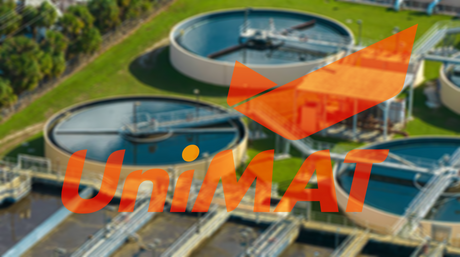1.Project Description

With the development of economy and society, the impact of water on people's life and production has become increasingly prominent. People's requirements for water quality and safety and reliability have been continuously improved. As a country that is scarce, it is necessary to consider the protection of water resources and improve the utilization rate of water resources while developing the economy. This led to the birth of sewage treatment plants, but at present, the establishment of sewage treatment plants is mainly concentrated in places where industries are relatively concentrated, compared with the cost of building sewage treatment plants in relatively scattered and detailed rivers and canals and around some water sources. This has further promoted the development of sewage treatment, realized the expansion from large factories to small and micro sites, and extended from the method of drug decomposition, disinfection and filtration to the method of regular cultivation, discharge and decomposition of beneficial bacteria. Due to the wide coverage, large number, and relative dispersal of small and micro sewage treatment sites, it is impossible to achieve on-site maintenance and monitoring of all personnel. Therefore, it is necessary to realize remote real-time data and other status monitoring of each site through the Internet of Things and cooperate with relevant local personnel. Regular maintenance and water outlet inspection to ensure the quality of the water outlet.
2.Principles of sewage treatment
The main use of this project is the activated sludge method (also called aeration method) in the aerobic treatment method. After the sewage enters the aeration tank, bacteria and other microorganisms in the activated sludge multiply in large numbers, forming bacteria gelatin flocs, constituting the skeleton of activated sludge, protozoa attach to it, and filamentous bacteria and fungi are intertwined together to form individual sludge. Granular active microbial populations. The aeration tank is continuously inflated and stirred to form a mud-water mixture. When the wastewater is in contact with the activated sludge, the organic matter in the sewage is adsorbed on the activated sludge in a short period of time, and the soluble substances directly enter the cells. Macromolecular organic substances are degraded into small molecular substances by extracellular enzymes produced by cells and then penetrate into cells. Nutrients entering the cells undergo a series of biochemical reactions under the action of intracellular enzymes to convert organic matter into simple inorganic substances such as C02 and H2O, and generate energy at the same time. Microorganisms use the energy released by respiration and the intermediate products produced in the oxidation process to synthesize cell substances, so that the bacteria multiply in large numbers. The microorganisms continue to carry out biological oxidation, and the organic matter in the sewage is continuously reduced, so that the sewage can be purified. When nutrients are lacking, microorganisms oxidize intracellular storage substances and generate energy. This phenomenon is called autooxidation or endogenous respiration. The mixture in the aeration tank flows into the sedimentation tank with a low BOD value. Activated sludge passes through static, coagulation, sedimentation and separation, and the supernatant is treated water, which is discharged out of the system. A part of the settled activated sludge returns to the aeration tank and mixes with untreated wastewater. Repeating the above process, the returning sludge can increase the microbial content in the aeration tank and accelerate the biochemical reaction process. The remaining sludge will continue to be used after discharge or other treatment.

4.Design plan
|
Control System |
UniMAT X3-32TD-E0 X-E32X-00 |
|
Operation interface |
|
|
Inverter |
1.5~7.5KW *4 |
|
Working power |
380VAC/50Hz |
|
Working environment |
Temperature 20-50℃ |
|
Humidity 20-90% |
According to the process requirements of the final equipment, the system design process mainly includes system hardware design and system software design; system hardware design includes hardware (product) selection and configuration, electrical control and other three parts, system software design includes process control, I/O O configuration and program design and other three parts.

5.Software system
a、 HMI :

b、 cloudcon figuration:

c、 Mobile APP

6.Implementation Effect
Through on-site debugging, the system is stable, and various parameters can be monitored remotely in real time, and system maintenance can be carried out. Customer satisfaction is high!


